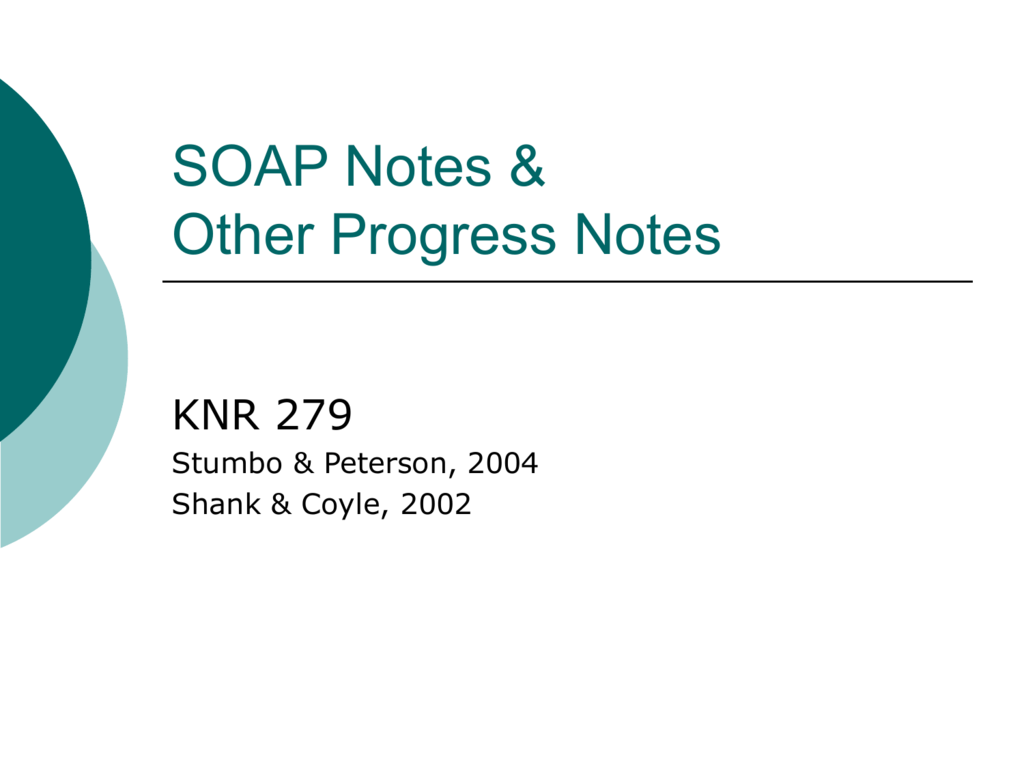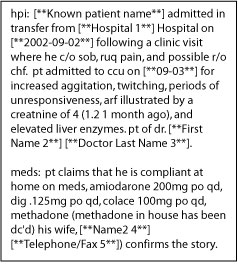Jan 16, 2020 DARP means Data Action/nursing decision, Response, Plan. Additionally, what is charting by exception? Charting by exception (CBE) is a shorthand method of documenting normal findings, based on clearly defined normals, standards of practice, and predetermined criteria for assessments and interventions. Thanks so much for the suggestion on DARP notes! I have had difficulty over the last couple of years with SOAP notes – and think that the Response portion of DARP is what I was missing. The Response sections allows me to note suggestions and feedback I may have offered to the client.
Data, Assessment, Plan. These are the fundamental building blocks of the DAP note. While they serve the same purpose as a SOAP note, DAP is a slightly different format. What you choose is entirely up to personal preference. This article should help you understand the basics of DAP notes and how to use them in your behavioral health practice.
What is a DAP note?
Below is a fictional example of a progress note in the SOAP (Subjective, Objective, Assessment, Plan) format. For the purposes of this sample progress note, the focus is on the content of the progress note, rather than the format. The sample offers examples of what the SAPC QI and UM. ♦ Example: Needs support in dealing with scheduled appointments and taking responsibility for being on time to group. ♦ Example: Needs referral to mental health specialist for mental health assessment. ♦ Example: Beginning to own responsibility for consequences related to drug use. P = Plan for future clinical work. If new information becomes available, progress (or the lack thereof) occurs, additional problems arise, or the simple passage of time means a treatment plan update is needed, note that too, as a prompt to do the update next session. Other guidelines for DAP notes.
A DAP note is a method of documentation used by health care providers, social workers and similar professionals. While SOAP is a more popular format in medicine, the Data, Assessment, Plan paradigm is potentially more appropriate for behavioral health.
The Basics of DAP
- Data — this section includes observable and identifiable behaviors and traits. This section answers the question “What did I see during the session?”
- Assessment — this is about the meaning of the data. This includes clinical findings. Essentially, it answers the question, “What does the data mean?”
- Plan — this wouldn’t be a complete treatment plan, that would be on another document. (See our other article Writing Great Mental Health Treatment Plans for more detail on treatment plans.) The Plan section in a DAP note is where you answer the question, “What will I do in light of the Assessment.”
Some practitioners add “Response” to the Assessment section (i.e. DARP note,) however, this is really just an extension of the assessment. This would be where you would record the client’s response to the assessment. It’s a helpful mental tool for you to expand on the Assessment section; use it if you want. In mental health treatment especially, the client’s response can be valuable information as their response determines the effectiveness of any plan you might make.
SOAP or DAP? Which is better for mental health?

SOAP has traditionally been the “industry standard” for clinical notes. This is a result of the influence of the medical profession. While behavioral health, specifically non-psychiatric behavioral health treatment, is “health care,” counseling and therapy doesn’t have the benefit of the same sorts of diagnostic data as does medicine.
In a SOAP note, the Subjective section is where you record subjective feelings (obviously enough.) The problem with behavioral health is that much of your session is inherently subjective. Meaning, it’s difficult to take the “temperature” of a therapy client — a temperature is an indisputable fact, while, “appears to be falling asleep,” could be considered subjective.
Essentially, the problem with the Objective section is that many of the things you are recording aren’t quantifiable. Can you measure the degree of which a patient “appears to be falling asleep?” Can you compare that to another patient who is also “appearing to fall asleep?” It’s pretty hard and, unless you’re measuring vital signs and perhaps brainwaves during a session, ultimately, that observation is mostly subjective, however in a behavioral health SOAP note, that “appears to be falling asleep,” would be assigned to the Objective section. It can get confusing simply because of the nature of a therapy session. It’s great for medicine as “The patient has a 99.3 temperature” is clearly objective, but it can get murky when you’re dealing with mental health.
The Subjective and Objective sections of your note often begin to merge together in a behavioral health context. However, with a DAP note, that merging isn’t problematic, since it would all be recorded under the Data section.
It’s really just a mental exercise in terminology and how you record information, but in my opinion, DAP is a superior choice simply because it eliminates any ambiguity and gives you a clearer mental model with which to organize your thoughts.

DAP or SOAP — whatever you use is entirely up to you (or your administrators,) the important thing is to be consistent, record the data, and stay methodical and organized.
What clinical note formats do you use in your practice? Have any tips you’d like to share with the community? Leave a comment below and let us know!

Creating effective notes for your therapy sessions doesn’t have to be a daunting task. Many clinicians have found that using DAP notes is the best way to take notes in a quick, useful, and effective manner. Of course, before using DAP notes you’ll need to understand the basics behind them and get a few tips for how you can use the technique for your notes.
DAP Notes Basics
The first step in writing DAP notes is understanding the format. Let’s evaluate each section.
D – Data
When writing in this section you’ll want to take note of what you observed during the session. This could be any relevant behavior, especially those that might affect the way you proceed with treatment.
A – Assessment
After you’ve recorded the relevant behaviors, you’ll use this section to understand what those behaviors mean. Essentially, you’ve collected your data and now you need to analyze it. What do you think that action or actions mean?
P – Plan
This is the final piece of your note-taking puzzle. You’ve gathered data through observation, you’ve assessed the data accordingly, and now you’ll use what you’ve learned to record the treatment plan for your patient.
That’s the basics of DAP notes. It's simple enough, right? Of course, you want to use the technique in a way that’s beneficial to you.
3 Tips for Making DAP Notes Work
1. Define Your Perfect Note
When writing your notes, it helps to understand what perfection looks like to you. Yes, your notes will not be perfect, because no note truly is, but you need to understand the outcome you’re looking for before you can know if you got close to it. We’ve already defined each section and what guidelines say they should have, once you decide to use this method you have to tailor that information to fit your needs. Ask yourself – What information do I need about my patient and this session to be able to create a plan for them? If someone else were writing these notes, what information would I find usable and helpful?

After you’ve answered these questions for yourself you can begin to determine how each section of your therapy notes should look. For instance, maybe your data section contains phrases that are only 3 to 5 words in length to give you quick details of what you see while your assessment section features longer sentences that provide the detail you need regarding what you wrote in the data section. What matters is that each section allows you to use the information contained there in a quick and effective manner.
2. Keep It Simple
You want to get as much valuable information from your notes as possible, but you don’t want to overcomplicate them. Start getting familiar with the information you don’t want to include in your notes and the information you need to include. You don’t need to record that you adjusted the temperature as your patient entered the room, but you may want to note your patient’s demeanor as they greeted you. What you want to avoid is a bunch of words on the page that look thorough but ultimately can’t be used. This may take some practice, but it’s a habit you’ll be happy you developed.
What Is A Darp Note
3. Use the Tools that Work Best for You
Writing Darp Notes
Another piece of the process you need to consider is what you’ll be using to take your notes. Is it more effective for you to use an online template to take notes or would you prefer writing your notes on paper then transferring them online? When you’re deciding which is best for you, you’ll want to keep the result you’re working towards in mind. Are your handwritten notes sloppy and hard to understand? Do you find that you can’t type as fast as you think? You might have to work with both for a while before you get a handle on the best method to use going forward.
If you aren’t sure which method works best for you, you can always start with templates that you can either print or use online. Using a template will give you the opportunity to make sure you are recording the information you need each time. If you use the same template on and off-line, you’ll have the opportunity to gauge which technique works best for you (and saves you the most time). You can also take things a step further and use a HIPAA compliant EHR that allows you to record and save notes for future review.
Pediatric Darp Notes Examples
If you’re interested in the ways that My Client’s Plus can help you with note-taking or other aspects of your practice, don’t hesitate to sign up for a free trial or contact us for more information.